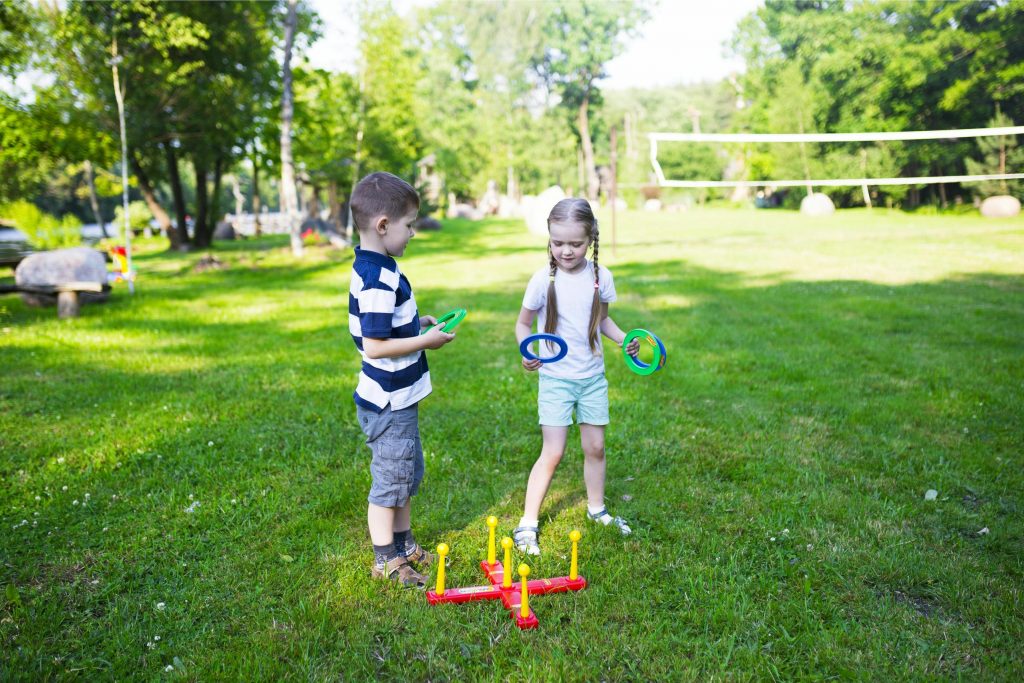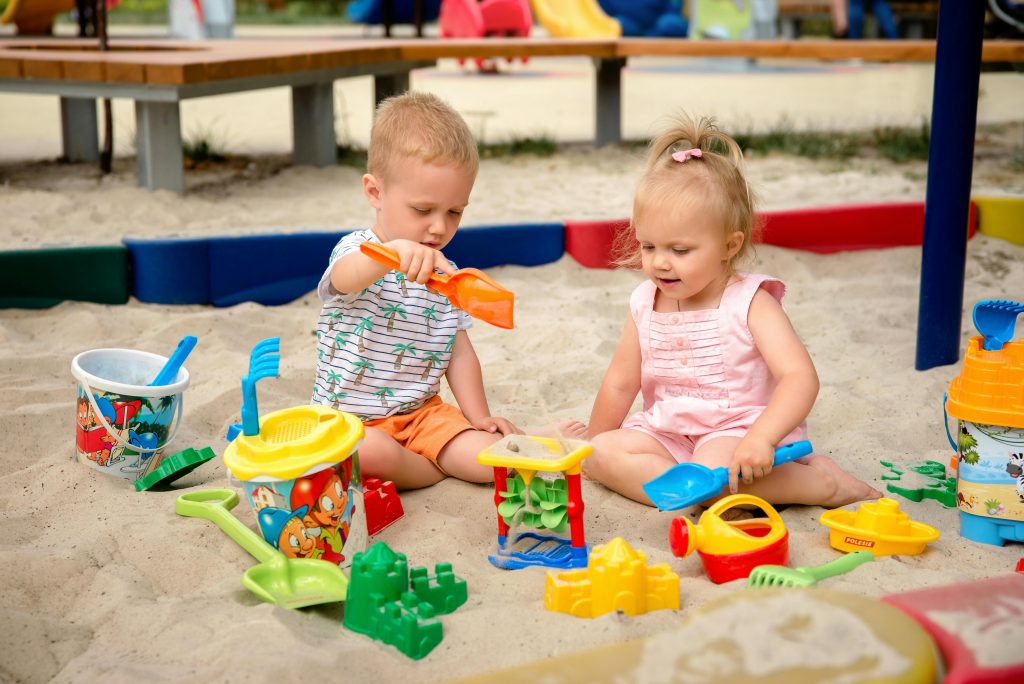Fun & Creative Outdoor Activities for Kids of All Ages


In today’s digital world, it’s more important than ever to get kids outside and moving. Outdoor play helps children build strong bodies, healthy habits, and lifelong skills. Whether you’re a parent, teacher, or caregiver, having a go-to list of outdoor activities for kids can make it easier to encourage fresh air fun and creative exploration.
This guide is packed with simple, screen-free ideas that kids of all ages can enjoy—from toddlers to teens. Let’s explore why outdoor play is so valuable and dive into fun ideas that can turn any backyard, park, or driveway into an adventure zone.
Why Outdoor Play Matters

Spending time outside isn’t just fun—it’s essential for kids’ overall development. Outdoor activities support a wide range of physical, mental, and emotional benefits that help children grow into healthier, happier individuals. Here are some key advantages of outdoor play:
Boosts physical fitness: Running, jumping, climbing, and playing games build muscle strength, improve coordination, and enhance balance. These movements help develop gross motor skills that are crucial during early growth stages.
Improves mood: Natural light increases serotonin levels, which can boost mood and focus. Being outdoors also helps reduce anxiety and stress, making children feel calmer and more relaxed.
Encourages creativity: Unstructured play in outdoor settings encourages kids to use their imagination. Whether they’re turning sticks into magic wands or building forts out of leaves, nature sparks creative thinking and problem-solving.
Builds social skills: Group play outdoors fosters teamwork, cooperation, and communication. Kids learn to share, resolve conflicts, and work together toward common goals—skills they’ll use throughout life.
Reduces screen time: Outdoor play provides a much-needed break from screens, encouraging kids to explore the real world. It creates a healthier balance between digital entertainment and active living.
Strengthens immune system: Exposure to natural environments helps boost the immune system by introducing children to a variety of microbes that help develop stronger immunity over time.
Enhances focus and attention: Spending time in nature has been linked to improved concentration, especially in children with attention challenges. Green spaces offer a calming backdrop that supports mental clarity.
Develops independence: Outdoor play often allows kids to explore and make decisions on their own. Whether navigating a playground or inventing a new game, children learn self-reliance and confidence.
Promotes environmental awareness: Interacting with nature helps children appreciate the environment. Simple activities like planting a garden or observing wildlife can inspire a lifelong respect for the planet.
Encourages healthy risk-taking: Outdoor environments often present manageable challenges—like climbing a rock or balancing on a log—that teach kids how to assess and take safe risks, helping build courage and resilience.
Outdoor Activities for Toddlers (Ages 1–3)
Little ones love to explore the world through their senses. These outdoor activities are perfect for developing motor skills and curiosity:
1. Nature Walk and Treasure Hunt
Take a slow walk around your yard or a nearby park. Encourage your toddler to find leaves, rocks, or flowers. Use a bucket or bag to collect their “treasures.”
2. Sidewalk Chalk Art
Give them oversized chalk and let them scribble on the driveway. Draw shapes, letters, or even an obstacle course.
3. Water Play
Set up a kiddie pool, sprinkler, or bucket of water with cups and toys. Splashing helps toddlers build coordination and stay cool.
4. Bubble Chasing
Blow bubbles and let your toddler run after them. It’s great for motor development and guaranteed giggles.
5. Sand Sensory Bin
Fill a container with sand, shovels, and small toys. It’s a mini beach adventure right at home.
Outdoor Activities for Preschoolers (Ages 4–6)

Preschoolers are energetic and love pretend play. Here are some outdoor activities to match their growing abilities:
6. Backyard Obstacle Course
Use cones, chairs, ropes, or hula hoops to create a course. Have kids crawl under, hop over, and run around objects for fun physical play.
7. Nature Scavenger Hunt
Make a list with simple pictures or words (leaf, feather, stick, flower). Kids search for items and check them off.
8. Gardening Together
Let them dig, plant seeds, and water flowers. Gardening teaches responsibility and patience while getting hands dirty.
9. Balloon Tennis
Make rackets from paper plates and sticks. Hit a balloon back and forth. It’s safe and great for hand-eye coordination.
10. Shadow Tag
Instead of tagging each other, players try to step on each other’s shadows. It’s a fun twist on a classic game.
Outdoor Activities for Elementary Kids (Ages 7–10)
This age group thrives on games, challenges, and teamwork. These activities are ideal for school-aged kids:
11. Bike Rides & Scooter Races
Riding builds leg strength and confidence. Add a safe race for a little friendly competition.
12. DIY Backyard Olympics
Create events like long jump, sack race, or water balloon toss. Keep score or just play for fun.
13. Capture the Flag
Divide into two teams, each with a “flag” (bandana or cloth). Teams try to grab the other’s flag and return it without getting tagged.
14. Geocaching
Use a phone and GPS to find hidden treasures in your area. It’s like a real-world treasure hunt for kids and families.
15. Bug Safari
Give your child a magnifying glass and a jar (with holes). Explore plants and soil for ants, beetles, or ladybugs. Release them afterward!
Outdoor Activities for Preteens & Teens (Ages 11–15)
Even older kids need outdoor time—but it has to feel fun and relevant. These ideas are more challenging and social:
16. Hiking Adventures
Explore local trails and let older kids lead the way. Add in some wildlife spotting or photography to keep it engaging.
17. DIY Sports Tournaments
Set up brackets for basketball, soccer, or volleyball. Teens can organize teams and keep scores for a tournament vibe.
18. Outdoor Movie Night
Use a projector and blanket in the backyard. Let kids invite friends and watch a movie under the stars.
19. Skateboarding or Rollerblading
Designate a safe spot for practice. This builds balance and confidence—and gives kids a sense of freedom.
20. Backyard Campout
Set up tents, roast marshmallows, and stargaze. It’s a great way to unplug without leaving home.
Rainy Day Alternatives
What if the weather doesn’t cooperate? A rainy day doesn’t have to put an end to playtime. With a little creativity, you can bring the spirit of outdoor fun inside. Here are some indoor activities that keep kids active, engaged, and entertained—no sunshine required:
Create an indoor obstacle course: Use painter’s tape to lay out paths, zigzags, and hopping zones across your floors. Add chairs to crawl under, cushions to jump over, and toys to weave around. This helps burn off energy and improves coordination, all while staying dry and safe indoors.
Start an indoor garden: Even if you can’t dig in the dirt outside, you can still get your hands dirty indoors. Try growing herbs on the windowsill, planting seeds in jars, or using starter kits to sprout beans or flowers. It teaches patience, responsibility, and a love for nature.
Set up a camping adventure: Pitch a tent in the living room or drape blankets over furniture to build your own campsite. Add sleeping bags, flashlights, and a few snacks to create a cozy setting. You can tell stories, “roast” marshmallows over a battery-powered lantern, or stargaze with glow-in-the-dark stickers on the ceiling.
Host an indoor scavenger hunt: Make a list of objects for kids to find around the house—like something soft, something red, or something that smells good. This keeps them moving and thinking, and you can adjust the difficulty level based on their age.
Dance and movement games: Turn on fun music and let kids dance, stretch, or try freeze dance. It’s a great way to get the wiggles out and lift their spirits when outdoor play isn’t possible.
Build and race paper airplanes: Create different paper airplane designs and see which ones fly the farthest across a hallway or room. Kids can learn about aerodynamics while having fun experimenting.
Explore sensory bins: Fill containers with items like rice, beans, water beads, or kinetic sand. Add scoops, cups, and small toys to make it hands-on and imaginative. Sensory play can be soothing and helps develop fine motor skills.
Try indoor bowling: Set up plastic cups or empty water bottles as pins and use a soft ball to knock them down. This game encourages hand-eye coordination and can be played solo or with siblings.
Build with blocks or LEGO®: Challenge your child to build a tall tower, bridge, or even a mini city. Construction play fosters creativity, spatial awareness, and problem-solving.
Make a weather-themed craft: Draw rainclouds, cut out paper umbrellas, or create lightning bolt collages. It’s a chance to turn a gloomy day into something colorful and expressive.
Safety Tips for Outdoor Play
Outdoor adventures are exciting and healthy, but they come with a few risks. A little planning can go a long way in keeping playtime fun and injury-free. Follow these simple tips to make sure kids stay safe while enjoying the great outdoors:
Apply sunscreen—even on cloudy days: UV rays can still cause sunburn when skies are overcast. Use a broad-spectrum sunscreen with at least SPF 30, and reapply every two hours or after water play or sweating. Don’t forget sensitive areas like ears, neck, and the tops of feet.
Stay hydrated with regular water breaks: Kids can get dehydrated quickly while running around. Offer water often, especially on hot days or during high-energy play. Skip sugary drinks—they’re less effective at keeping kids hydrated.
Inspect the play area for hazards: Before letting kids loose, check for things like broken glass, sharp sticks, bee nests, slippery surfaces, or uneven ground that could cause trips and falls. Regular yard maintenance helps prevent injuries before they happen.
Keep a close eye on young children: Always supervise toddlers and young kids, especially near streets, driveways, pools, or other bodies of water. Even shallow water can pose a drowning risk, and roads are unpredictable—even in quiet neighborhoods.
Use helmets and protective gear: Whether your child is riding a bike, scooter, or skateboard, make sure they wear a properly fitted helmet. Add elbow pads, knee pads, and wrist guards for extra protection. Teach kids the rules of the road or sidewalk before setting off.
Dress for the weather and activity: Choose breathable clothing in warm weather and layers in cooler months. Closed-toe shoes help prevent stubbed toes and offer better grip for climbing or running.
Teach kids boundaries and rules: Set clear limits about where it’s safe to play and explain why it’s important to stay within those areas. Practice road safety, stranger awareness, and how to ask for help if needed.
Watch for signs of heat or cold stress: In hot weather, look for signs of overheating like dizziness, headache, or flushed skin. In cold weather, watch for numb fingers or shivering. Bring kids indoors if temperatures become extreme.
Keep a first-aid kit nearby: Scrapes, splinters, and bumps happen. Having basic supplies like bandages, antiseptic wipes, tweezers, and ice packs nearby makes it easier to handle minor injuries quickly.
Be mindful of allergies and insect bites: If your child has allergies to pollen, stings, or plants, take extra precautions. Use insect repellent when needed and teach kids not to touch unknown plants or bugs.
Encouraging Daily Outdoor Time
Try to include at least 30–60 minutes of outdoor play each day. Make it part of your routine:
- Walk or bike to school when possible.
- Plan regular park or backyard time after homework.
- Get involved—join in games or suggest challenges.
The more consistent the routine, the more kids will see outdoor play as a normal, fun part of life.
Final Thoughts
From toddlers chasing bubbles to teens leading hikes, outdoor activities for kids offer endless possibilities for growth, fun, and connection. Whether you have a big backyard or just a nearby sidewalk, you can create memorable adventures that get kids moving, learning, and laughing.
So grab some sunscreen, pack a snack, and head outside—the fun is waiting!





